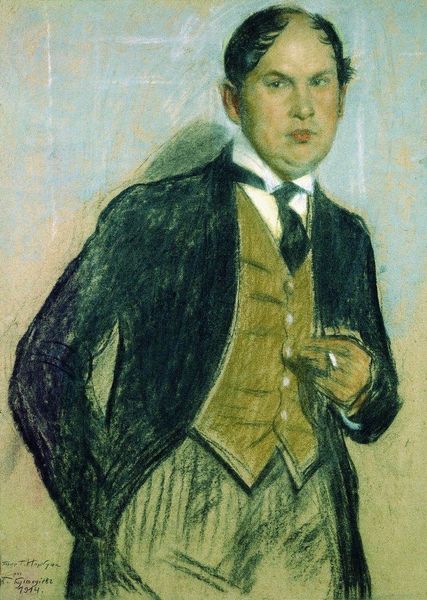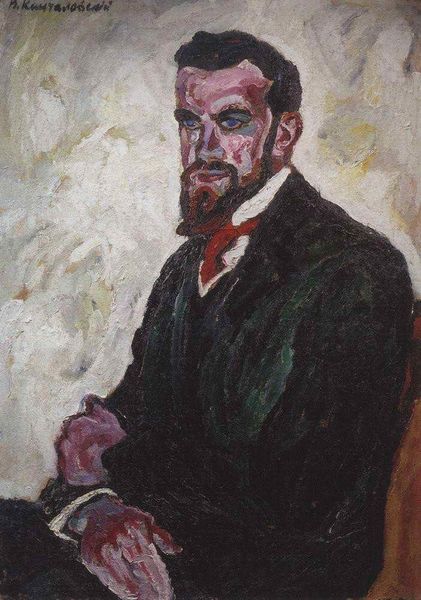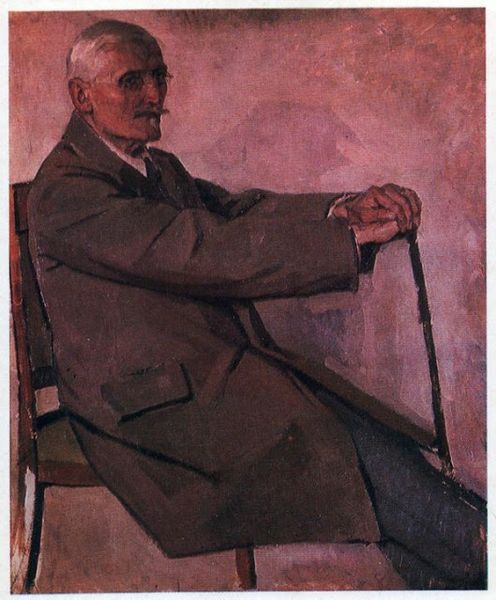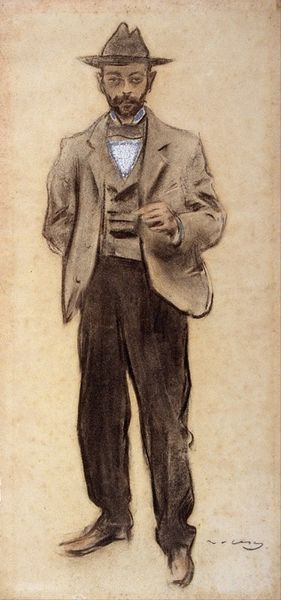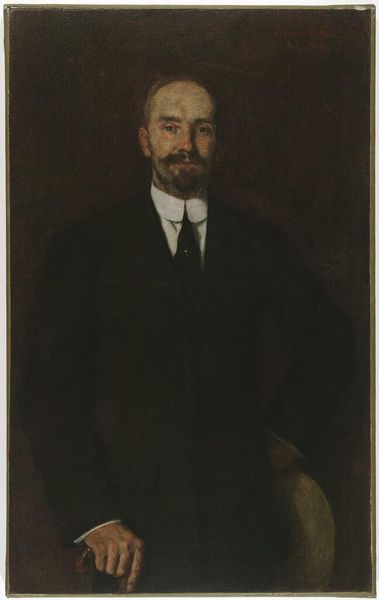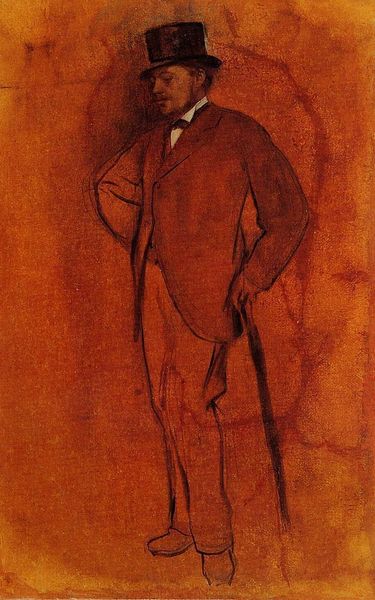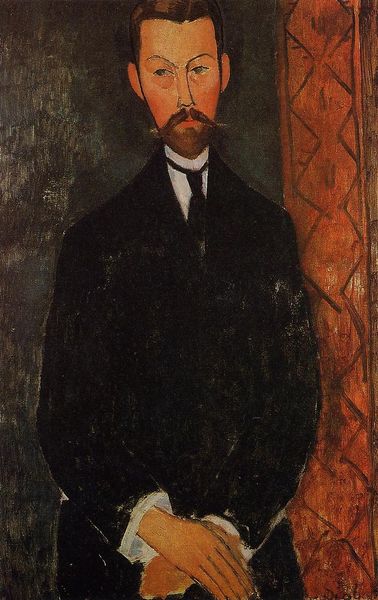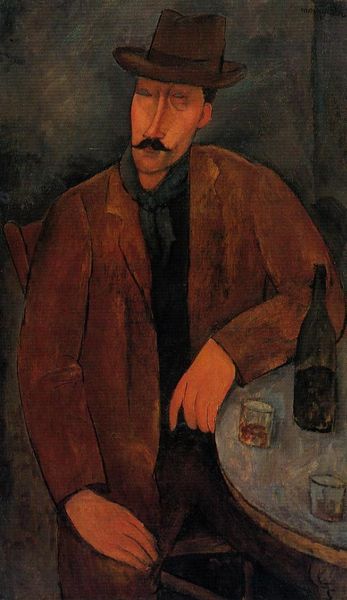
Copyright: Public domain
Editor: Here we have Boris Kustodiev’s "Portrait of Ivan Bilibin," created in 1914 using pastel. I’m struck by the almost ethereal quality, created with layers of dry pigment. How would you approach an interpretation of this piece? Curator: Let's begin by observing how the artist utilizes line and form. The subject is rendered with an attention to the crisp edges of the beard and the sharp tailoring of the suit. Note, however, the softness with which the facial features and hands are evoked. These forms blend into the ochre ground from which they arise, suggesting a certain ambiguity between figure and field. The interplay between detail and diffusion generates a visual tension. Editor: I see that now. So, is it the balance between sharp and soft, rather than the subject itself, that really defines the artwork? Curator: Precisely. And observe how Kustodiev manipulates the pastel medium. The visible strokes emphasize the work's construction. The formal relationships supersede any narrative interpretation, would you agree? Editor: It's true, I find myself focusing more on the textures and the composition than on who Ivan Bilibin actually was. It is quite intriguing to consider how the visible strokes and textures draw me away from the identity of the subject. Curator: It reveals a deliberate manipulation of visual language. By prioritizing the medium's properties, the artist compels us to engage with the work on a purely aesthetic level. I invite you to reflect on how our understanding of a portrait changes when it becomes an exploration of form and technique. Editor: That’s a fantastic point, really challenges conventional ways of looking at art! It’s been so helpful to look at this portrait beyond just its subject. Curator: And for me as well; exploring the dynamism between subject and medium opens endless ways of decoding artwork.
Comments
No comments
Be the first to comment and join the conversation on the ultimate creative platform.



